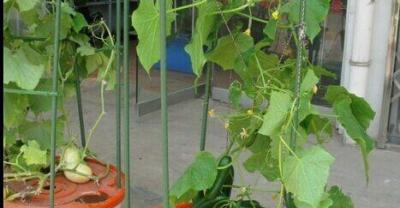The planting method of hydroponic vegetables in balcony for soilless cultivation
Nowadays, growing vegetables on the balcony is favored by more and more urbanites, harvesting healthy ingredients can also relieve the tiredness of intense work. Recently, the post shared the experience of hydroponic cultivation of vegetables on the balcony, making many netizens who are used to growing vegetables in flowerpots curious. For beginners, hydroponic culture is more difficult than soil culture, but it can be used as a fresh attempt to add a different scenery to the balcony.

Leafy vegetables are more suitable to try soilless water culture.
Constantly seeing some people on the Internet sharing the experience of growing vegetables on the balcony, I was also touched by that ease and joy. This year, we began to use our own nutrient solution (for plant growth) to do hydroponic experiments with lettuce seedlings, tomato seedlings, and so on. When the fruit was ripe, we couldn't wait to share it online.

According to reports, the steps of hydroponic vegetable culture on its balcony are as follows: online shopping of vegetable seedlings and nutrient solution, finding a few small foam boards (digging holes above, vegetable seedlings protruding from the hole, playing a fixed role), preparing transparent utensils such as plastic lunch boxes, and touching tap water, you can start hydroponics on the balcony.
It is emphasized that the tools are simple, but the details are the focus that determines whether the seedlings can thrive or not. "the first step in hydroponics is to raise seedlings." He first let the seedlings grow in the sand for about three weeks, and then moved the seedlings to containers filled with water and nutrient solution. "the sand is easy to dissolve after being washed by water, which makes it easy to move seedlings. If it is replaced with soil, it is easy to hurt the roots when washing."
After a period of practice, it is found that the best species of leafy vegetables are hydroponic vegetables on the balcony, such as lettuce, Chinese cabbage, rape, hollow cabbage, etc.; cucumbers and tomatoes can also be grown, but it is more troublesome to fix the vines.
The container had better be transparent to ensure that the water can see the sun.
Several matters needing attention in balcony hydroponics. For urban people who are difficult to get soil, hydroponic culture is a good attempt, the cost is not high, and it can prevent heavy metals from the soil from entering vegetables, but this method is more difficult to control than planting in the soil. There are no various elements in the soil in the water, so it can only be supplied by nutrient solution. The allocation of nutrient solution needs to be accurately handled.
Found on the Internet, hydroponic fertilizers are varied, mainly liquid, and a small bottle costs only a few yuan. Most stores will mark the mixing ratio with water in the instructions for reference. Different vegetable varieties have different nutritional preferences for fertilizers. For example, rapeseed needs sulfur-rich fertilizers, and how to "do what they like" needs to be explored and learned. "the water must be exposed to sunlight, preferably in a transparent container." Different from soil culture, the roots of plants in hydroponic culture absorb the dissolved oxygen in the water. Sunlight can produce green algae in the water, and the oxygen released by appropriate green algae is conducive to plant growth. At the same time, the bigger the container of the nutrient solution, the better, it is also to increase the oxygen in the water, and you can stir the nutrient solution in the container every once in a while to increase the oxygen content.
Of course, even if there are too many green algae, the nutrient solution should be changed about every 10 days. "evaporation in summer is also a problem that you need to remind yourself every day." growing vegetables with a 1.5-liter cola bottle, the water in the bottle evaporates 1/3 a day, so it is important to replenish water in time.
(food bar editor: caiba_org)
- Prev

Several kinds of vegetables that dogs can't eat, how many have you fed?
Vegetables are a good thing for people, which are rich in vitamins and are very helpful to the resistance of the body and balanced nutrition. Yeah, dogs.
- Next

Grow your own sprouts and eat fresh vegetables in winter.
There are few vegetables to eat in winter, but nutrition must be guaranteed. What should we do? Let me teach you how to grow vegetables at home. The first step is...
Related
- Where is it suitable to grow horseradish in China? it is expected to see the middle altitude horseradish in Alishan.
- How to prevent tomato virus disease reasonably? (Control methods included)
- Many people like to plant towel gourd on the balcony. What are the main points of this method and management?
- What crops can chili peppers be mixed with?
- Fertilization techniques and matters needing attention in Tomato
- What are the grafting techniques for peach seedlings in spring?
- Harm and control methods of root swelling disease of Chinese cabbage
- What are the pests of sweet potatoes? How to prevent and cure it?
- Symptoms, causes and Control methods of navel Rot in Tomato
- The cause of "Cucumber rotten bibcock" in Farmers' planting Cucumber and its Control Plan

